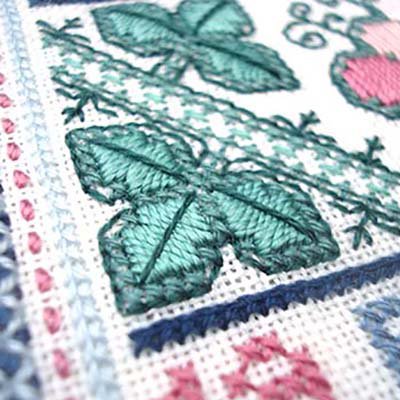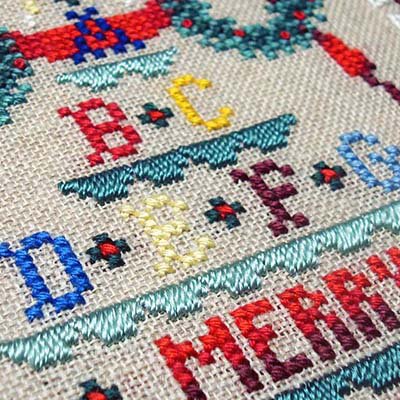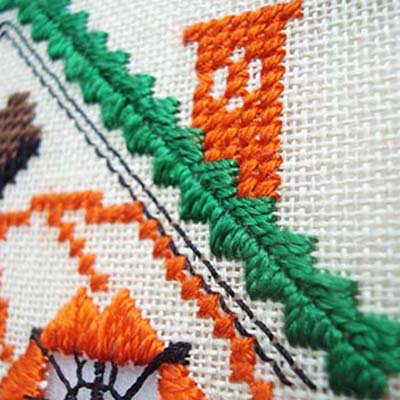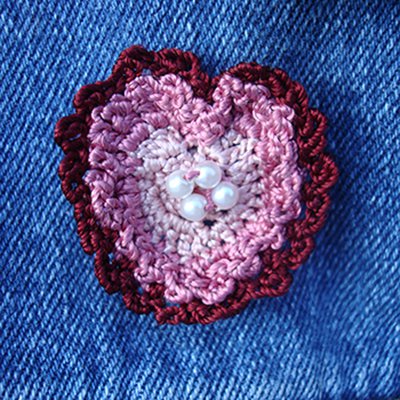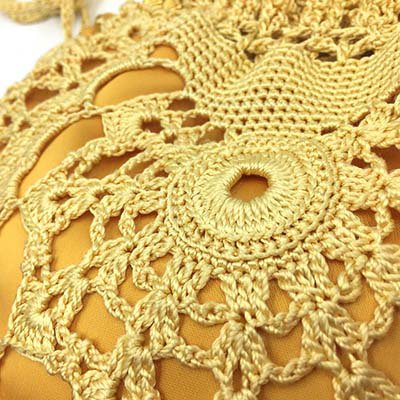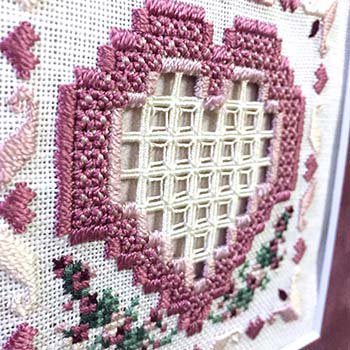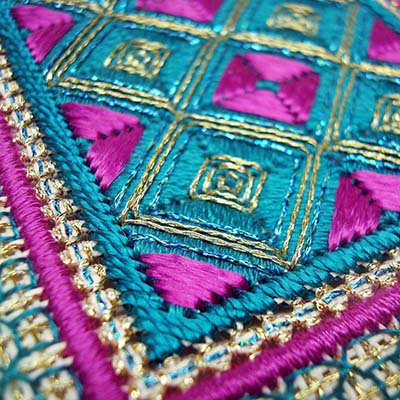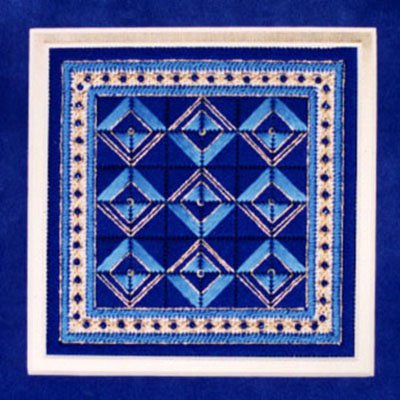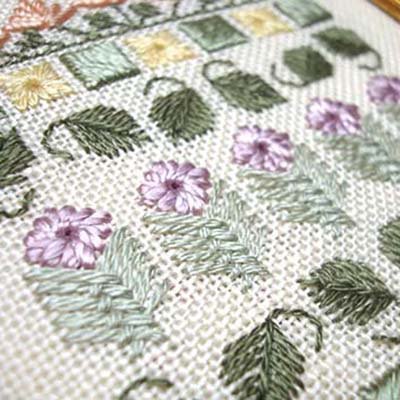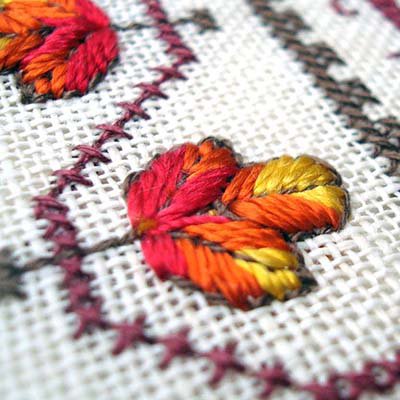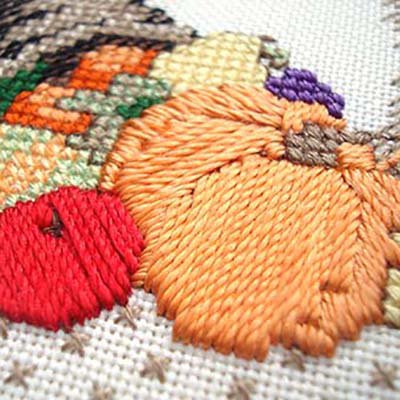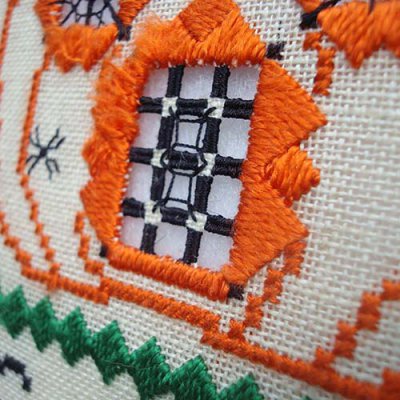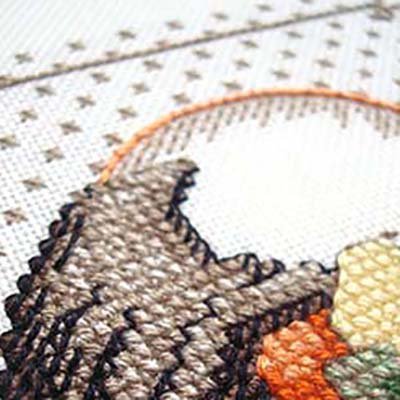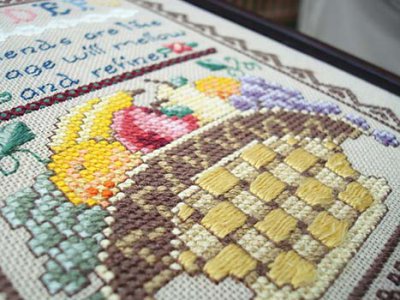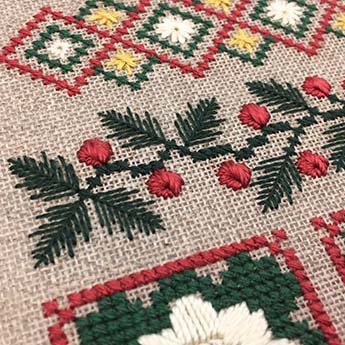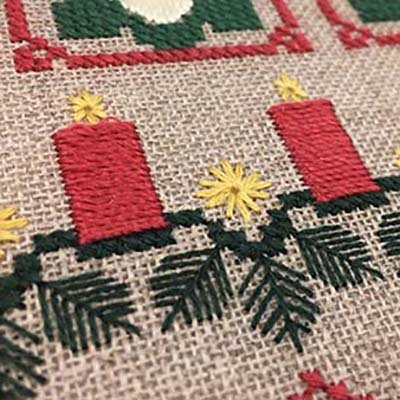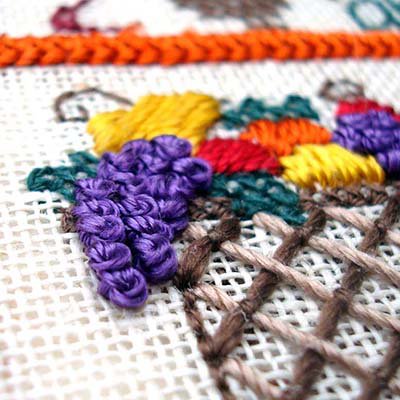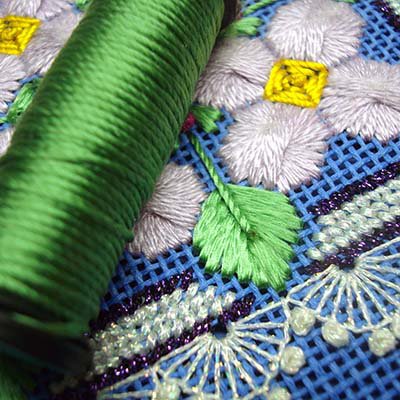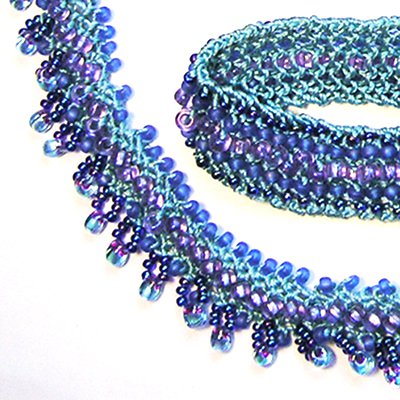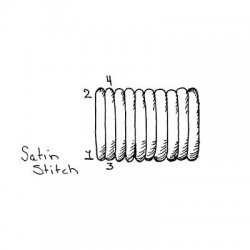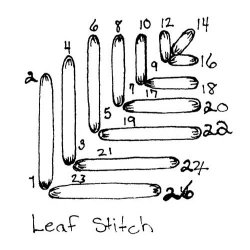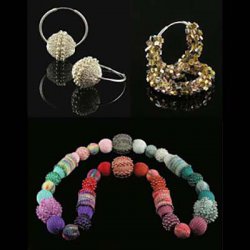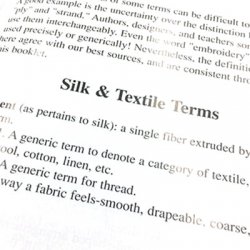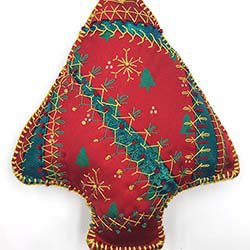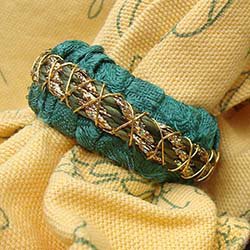How to use Kreinik Silk Serica®
Silk Serica® can be used as is, straight from the reel, as a 3-ply twisted filament silk. It can also be separated and used as a flat silk. Made of 100% pure filament silk, the sheen is so rich and bright, it instantly turns any design into a work of art. Perfect in heirloom projects and designs focusing on different textures.
The most important tip to remember when working with Silk Serica: moisturize your hands with a non-greasy hand cream. This will keep the filament silk from snagging on rough spots.
See Description below for more tips and usage ideas.
Silk Serica® is best used in stitches and designs that can show off it's natural, bright sheen. So, satin stitch, for example, leaf stitch, or any long stitch work best.
Care:
Silk Serica® should only be dry cleaned. Do not wash or wet block silk work. Do not use an embroidery hoop with silk thread in hand stitchery, as the rings, markings or folds left in the fabric cannot be removed by washing the piece. Instead, use stretcher bars, Q-snaps, or scroll frames.
Applications include:
appliqué (hand and machine), blackwork, costume making, crazy quilting (hand and machine), crewel, crochet, cross stitch/counted thread, doll making (hand or machine), hardanger, Japanese embroidery, knitting, lace making, machine embroidery/bobbin work, machine embroidery/couching, needlepoint/canvas work, punch embroidery, ribbon embroidery (hand and machine), smocking, stumpwork, weaving.
Hand Embroidery, Needlepoint, Cross Stitch, Counted Thread, Samplers, Hardanger:
- Silk Serica® is ideal for a variety of stitches in samplers, hardanger, crewel, stumpwork, crazy quilting, and needlepoint or canvas work. Longer stitches show off the twist and sheen better than short, compact stitches.
- Use it straight from the reel as a 3-ply twisted thread for tent stitch, satin stitch, kloster blocks and other stitches that showcase its texture.
- You can also ply Silk Serica® into 3 plies (do not ply further) and use it as a flat silk. The thread, when plied, is rippled. Use a laying tool to keep the thread flat as you stitch, or use a slightly damp cosmetic sponge to relax the thread. You may also choose to leave it rippled, which is reminiscent of silk work in antique samplers.
- Use one strand of Silk Serica® as it comes straight off the card or reel in tent stitch on 18-mesh canvas or in a variety of stitches on 28- to 32-count linen or evenweave fabrics.
Machine Embroidery, Quilting, Crazy Quilting:
- Use Silk Serica® in the bobbin of a machine, working the design from the bottom with adjustments to tension settings. Experiment until you find a set-up that works with your machine and your choice of fabric.
- It is lovely in hand embroidery stitches on quilts and crazy quilts; use longer stitches that show off the twist and sheen rather than small, compact stitches.
More tips on using Silk Serica® in needlework:
To keep your stitching looking its best, take time to wash your hands before stitching. Use a non-greasy hand cream to moisturize hands and prevent the silk from snagging on dry skin or cuticles.
- Prepare your ground material (fabric or canvas) prior to stitching to prevent the silk from snagging on rough edges. Turn the edges under with a running stitch, or cover the edges with tape.
- Silk Serica® comes on a snap-spool mechanism. Both sides of the spool open; look for the side where the thread end is located. Insert your thumbnail under the cap, and rotate the spool while gently lifting the cap to release the thread (the cap should not pop off). Snap the lid shut to secure the unused portion.
- Use lengths of silk no longer than 45cm (18 inches) for better thread control and reduced thread abrasion from repeated passes through the ground material.
- Use a needle large enough to 'open' the hole in the fabric to allow the silk thread to go through easily.
- It is important to maintain Silk Serica®'s twist as it comes from the spool to ensure uniform stitches from beginning to end. Since all of us as stitchers twist our needles a little bit while stitching, apply a slight reverse twist to your needle, or allow your needle to dangle every one or two stitches. This will prevent the softly twisted silk from untwisting or becoming too tightly twisted.
- Stitch using the 'stab' method rather than the 'hand sewing' method to reduce tangling, working your stitches in two movements: up vertically then down vertically through the fabric.
- A laying tool such as a Tekobari, Bodkin or Trolley Needle is helpful in neatly laying the silk while stitching, thereby obtaining the maximum degree of uniform light reflection. If you don't have a laying tool, use your needle or a large Tapestry needle to lay the thread as you stitch.
- A single strand of Silk Serica® may be further separated into 3 plies (do not ply further than 3 plies). Tap on the end of the strand to identify the 3 plies, or take hold of the strand with both hands near the end and apply a slight counter twist to separate the plies. Hold the strand vertically, then pull each ply individually, recombining the appropriate number of plies before threading the needle. To use as a flat silk (eliminating the ripples), dampen the silk with a slightly moist cosmetic sponge (the softest).
Would this product be useful in your business (ie, manufacturing, teaching, retail)? If so, you could benefit from bulk quantities at wholesale pricing. To open a wholesale account, we require a copy of your business license on file. Send a copy along with your business name and contact info to:
- Rainbow Gallery (owner of Kreinik threads), 2860 North Ontario Street, Burbank CA 91504 USA
- Rainbow Gallery phone 747-283-2006
- Email info@kreinik.com



